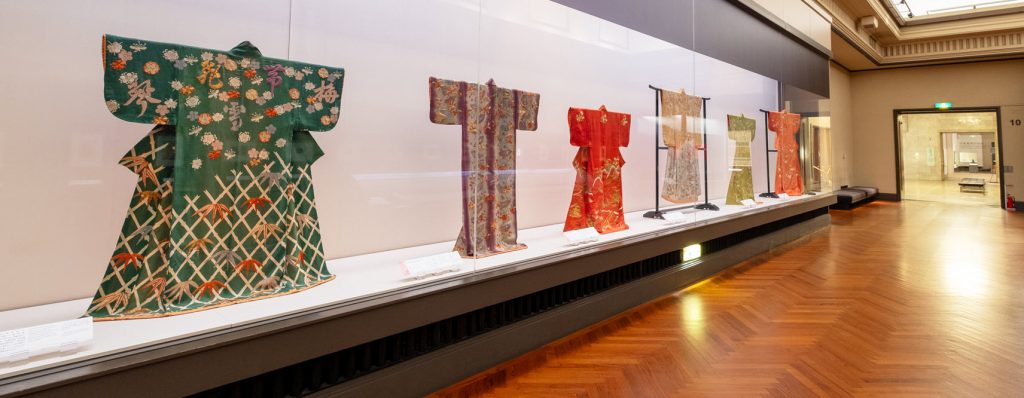Contents
The Tokyo National Museum (Tōkyō Kokuritsu Hakubutsukan), located in Ueno Park in the Taito district of Tokyo, is Japan’s oldest and largest museum, founded in 1872. It is also one of my personal favourites and I consider it a must for anyone who wants to learn more about Tokyo and the cultural history of Japan. It is also a rich source of information regarding the history and artistic expression of several other Asian countries in the region.
The Toyko National Museum considers the Yushima Seido Exhibition their starting point. This was a public exhibition of imperial artwork and scientific specimens arranged by the Ministry of Education’s Museum Department in 10 March – 30 April, 1872, in the 5th year of the Meiji Era. This exhibition, which is also known as the Shoheizaka Exhibition, contained objects authenticated by the Jinshin Survey.
Today, the Tokyo National Museum is a premier institution dedicated to collecting, preserving, and displaying a comprehensive collection of art pieces and archaeological artefacts from Japan and other Asian countries. The museum plays a pivotal role in the study and promotion of Japanese art and culture.

A few short facts about Tokoy National Museum
- The museum held roughly 120,000 cultural properties. On average, 3,000 cultural properties are on display at one time, with exhibitions changing every four to eight weeks.
- The museum held 89 National Treasures and 319 Horyuji Treasures
- The museum held 649 objects designed Important Cultural Properties
Collections & Exhibitions
The Tokyo National Museum houses over 110,000 objects, including a vast range of national treasures and important cultural properties. The collection spans various periods and genres, including ancient pottery, Buddhist sculptures, samurai armor and weapons, ukiyo-e prints, kimonos, and more contemporary works of art.
The museum’s holdings are not limited to Japanese art; they also encompass extensive collections from other Asian countries, offering visitors a comprehensive view of the artistic achievements across the continent.
The museum’s exhibitions are divided among several buildings, each focusing on different types of art and artefacts:
- Honkan (Japanese Gallery): Dedicated to Japanese art, showcasing items from various periods in Japan’s history.
- Toyokan (Asian Gallery): Features art from China, Korea, Southeast Asia, Central Asia, and Egypt.
- Heiseikan: Hosts Japanese archaeological artifacts and special temporary exhibitions.
- Hyokeikan: Used for special exhibitions and cultural events.
- Gallery of Horyuji Treasures: Displays a collection of religious artifacts associated with Horyuji Temple, one of the country’s oldest temples.
Honkan (Japanese Gallery)
This is also known as the Main Gallery, and the exhibition space spans 18 rooms on two floors. This is where we can enjoy the museum’s main display of Japanese art – from prehistory to the late 1800s. Honkan has a total floor space of 21,500 square metres if we include the storage space in the basement.
The exhibition rooms are ordered in a clockwise manner. You start in the south-east corner of the second floor, and gradually work your way through this floor, and than the first one, ending up in the south-west courner of the first floor.
The rooms and their themes
- The Dawn of Japanese Art and Rise of Buddhism Jomon, Yayoi, Kofun
- National Treasure Gallery Various periods
- Buddhist Art, Courtly Art, and Zen & Ink Painting Heian, Muromachi
- The Art of Tea Ceremony Various periods
- Attire of the Military Elite Heian, Edo
- Folding Screens and Sliding Door Paintings Various periods
- The Arts of Daily Life and Developments in Painting and Calligraphy Azuchi-Momoyama, Edo
- Noh and Kabuki Various periods
- Ukiyo-e and Fashion in the Edo Period
- Japanese Sculpture
- Lacquerware
- Metalwork and Ceramics
- Thematic Exhibition
- Records of History
- Ainu and Ryukyu
- Conservation and Restoration
- Modern Art
Trivia! Honkan is found on the former site of the main hall of the Kaneiji Temple, which was destroyed during the Japanese Civil War of 1868-1869.
Educational activities and resources
The Tokyo National Museum is a center for educational activities. It offers lectures, workshops, and guided tours aimed at promoting a deeper understanding of Japanese and Asian art, history and culture.
This museum also provides various educational materials and resources online, making its collections accessible to a global audience.
Visiting the museum
- The Tokyo National Museum is located in Ueno Park, a spacious public park that also hosts several other museums and cultural institutions, making it a cultural hub in Tokyo.
- The museum is easily accessible by public transportation, with Ueno Station nearby.
- Visitors to the museum can enjoy its café and restaurant, which offer refreshments and meals.
- The museum shop sells souvenirs, books, replicas of artworks, and more.
Importance
The Tokyo National Museum is more than just a repository of artifacts; it is a cultural institution that reflects the pride of Japan in its history and cultural achievements. It serves as a bridge between the past and the present, offering insights into the evolving dynamics of Japanese and Asian art. For international visitors, the museum offers an invaluable opportunity to experience the depth and breadth of Japanese culture and its connections to the wider Asian continent.
As Japan continues to play a significant role on the global stage, institutions like the Tokyo National Museum underscore the importance of cultural understanding and preservation in fostering global dialogue and appreciation of cultural diversity.
